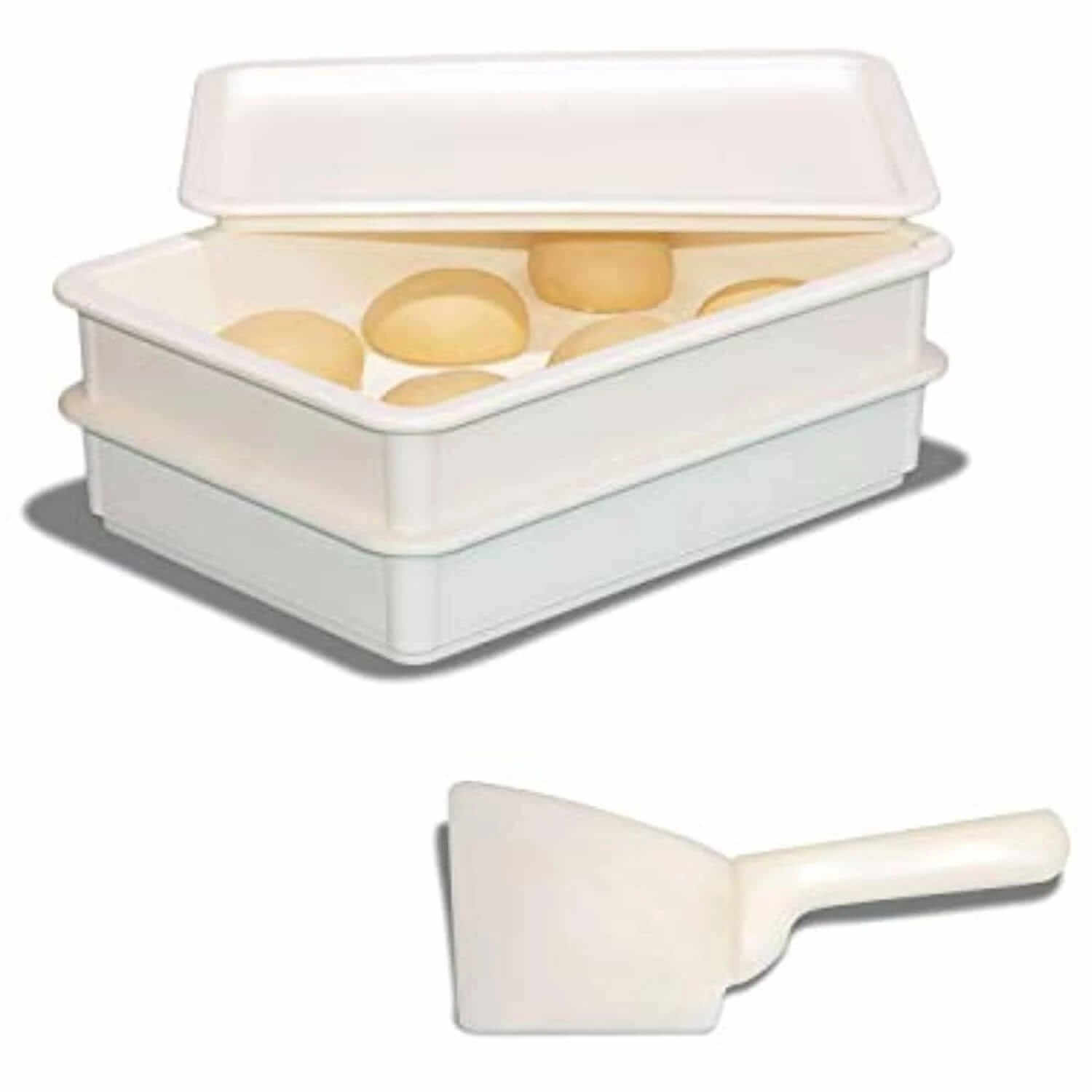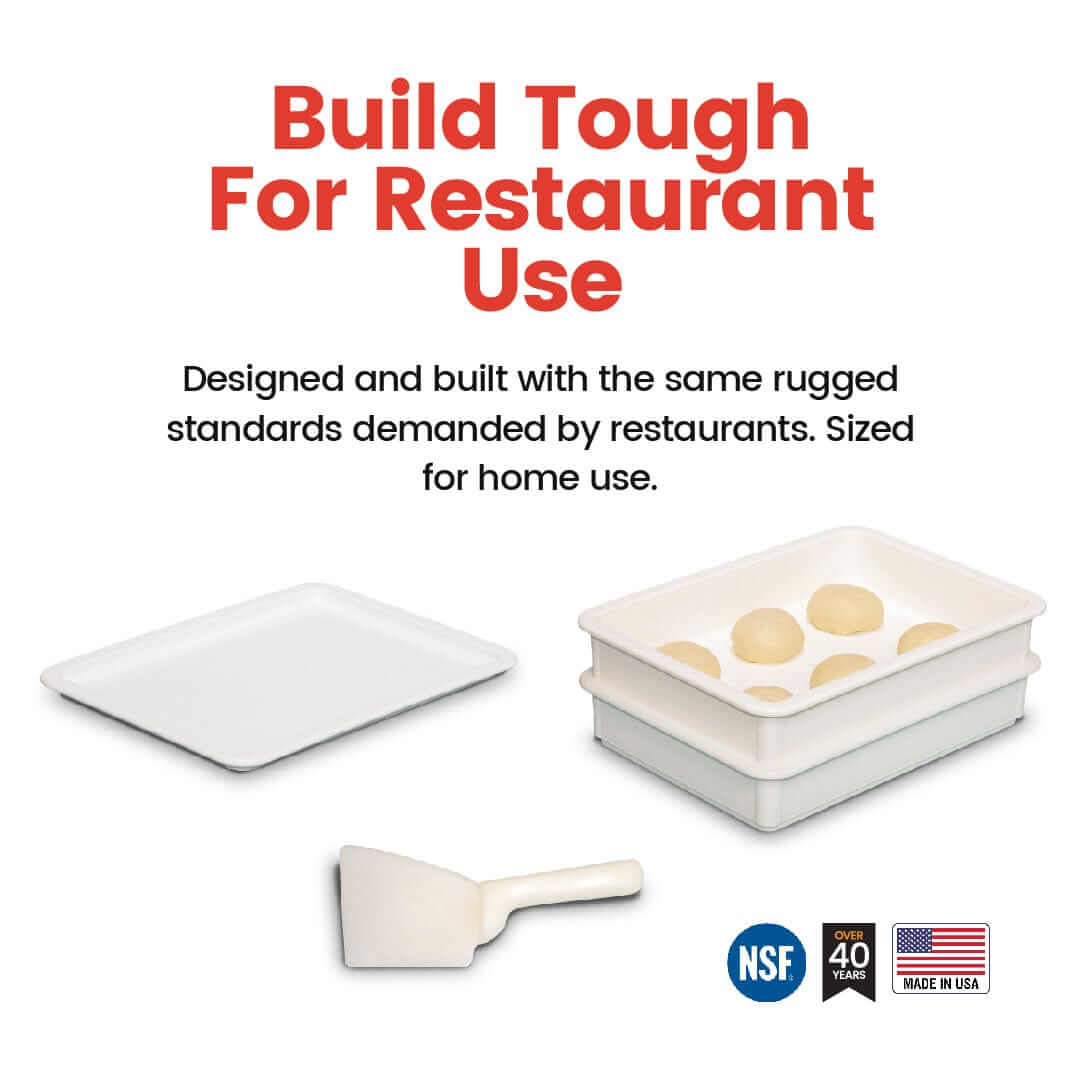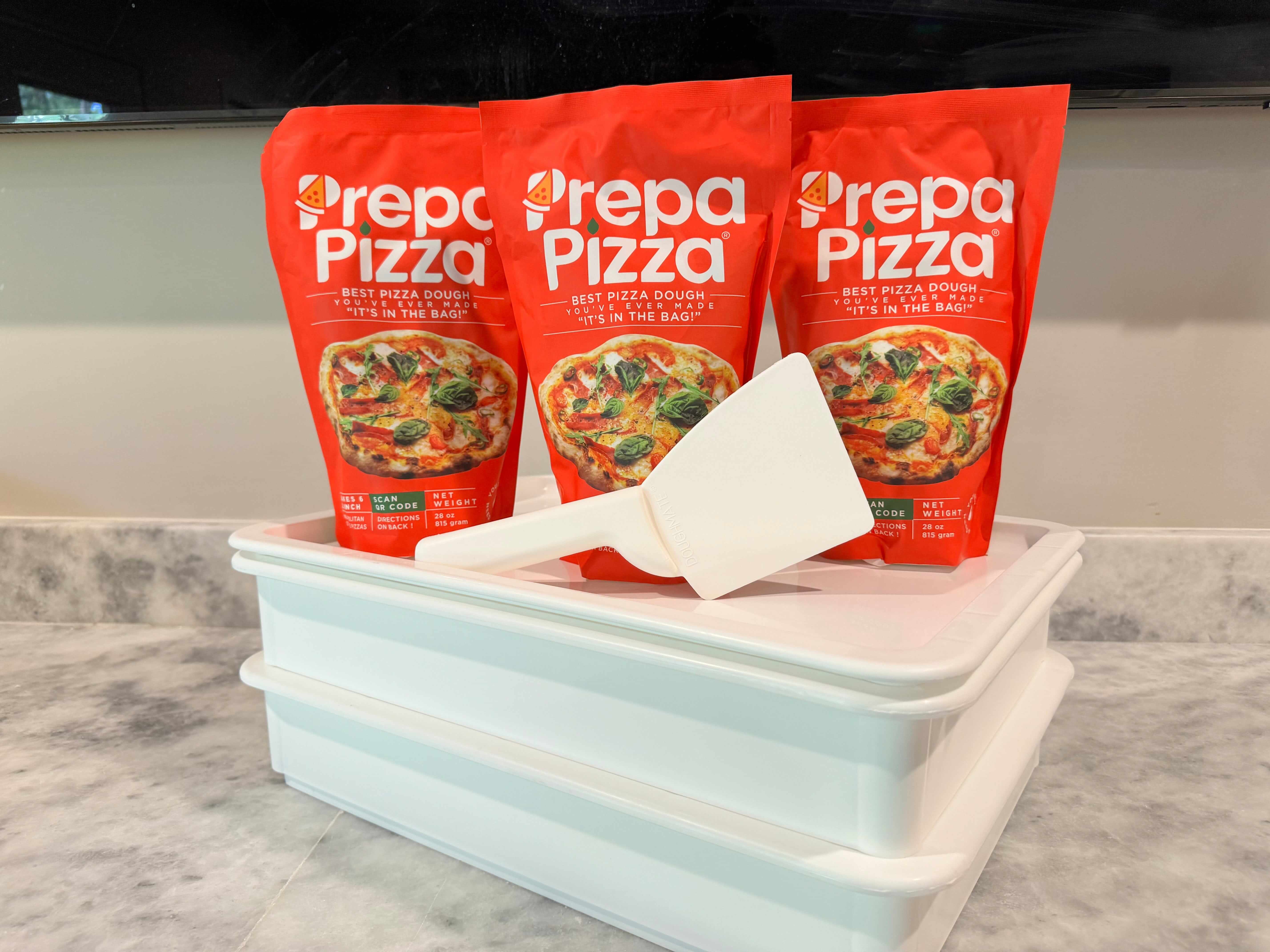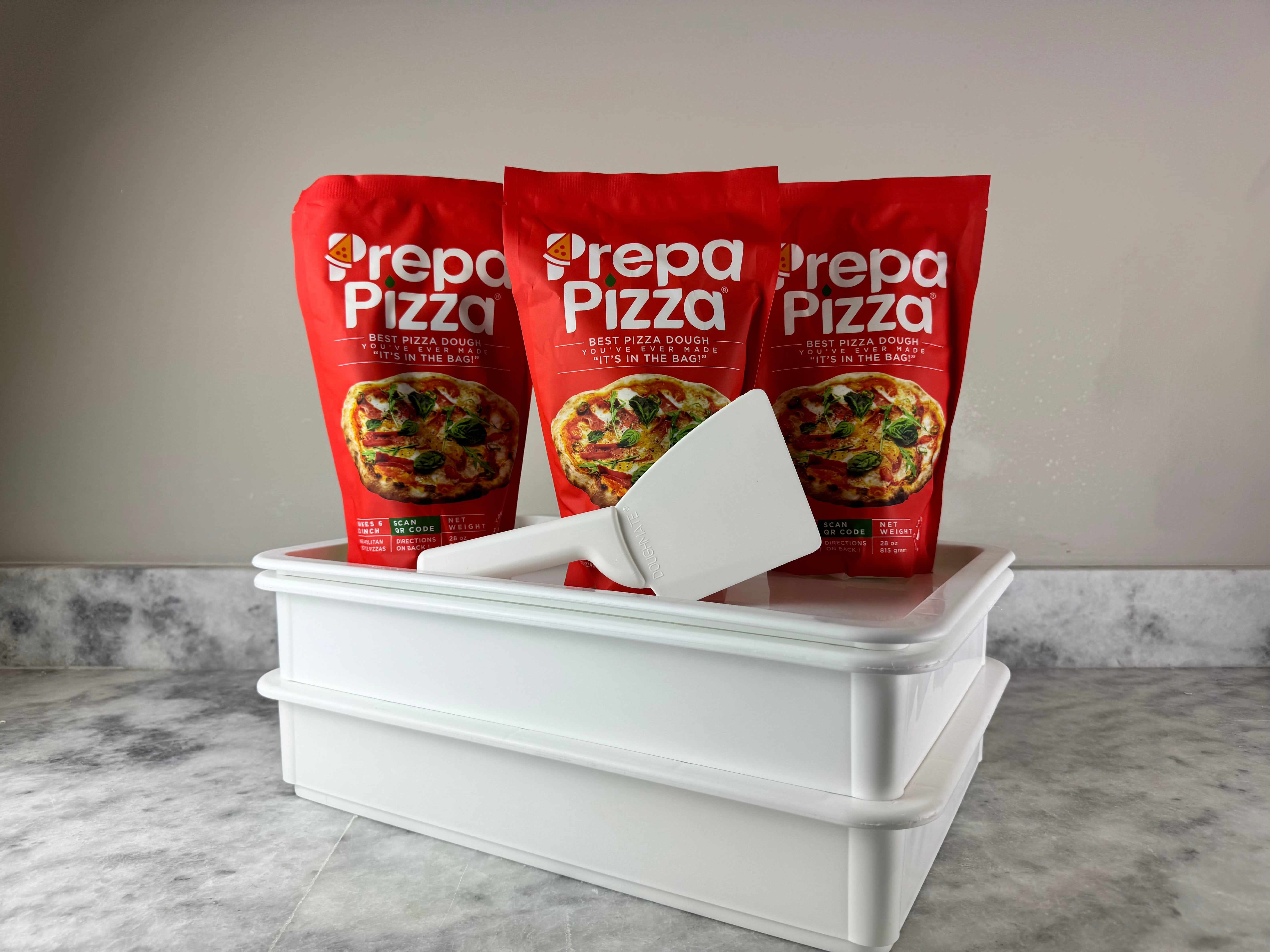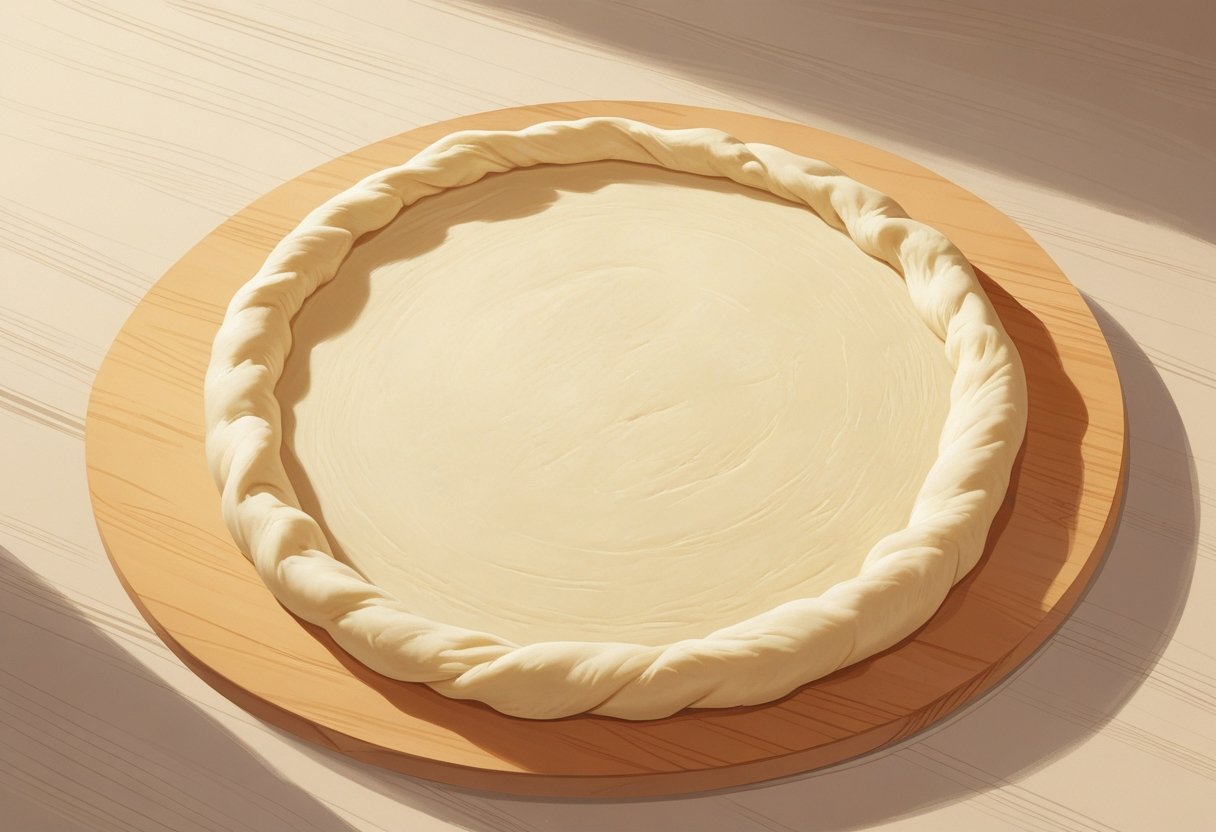
Thin Dough Base: The Essential Foundation for Perfect Pizzas
When it comes to creating delicious pizzas, the foundation lies in the dough. The thin dough base is not only a popular choice for achieving that crisp texture, but it also allows the toppings to shine without overwhelming the palate. With the right ingredients and technique, you can elevate your homemade pizzas to restaurant-quality standards. One of the easiest ways to ensure great results is by using Prepa Pizza's premium premade dough, designed specifically for aspiring home chefs. You can explore our dough options here.
A thin crust pizza offers a delightful balance between crunch and flavor, making it an ideal base for various toppings. Achieving the perfect thickness and texture is key, and with quality dough from Prepa Pizza, you can simplify the process. No more worrying about measuring and mixing ingredients—our premade dough takes the guesswork out of pizza-making, letting you focus on what matters most: enjoying a delicious slice.
Whether you're preparing a classic Margherita or experimenting with unique toppings, the thin dough base sets the stage for a memorable meal. With Prepa Pizza's dough, you'll enhance your cooking experience and leave a lasting impression on family and friends. Get ready to transform your pizza nights!
What Is a Thin Dough Base?
A thin dough base is essential for creating classic thin crust pizza. This style is characterized by a delicate, crispy texture that enhances the flavor of the toppings. Using Prepa Pizza’s premade dough ensures you’ll achieve a restaurant-quality result at home. This easy-to-handle dough is crafted for optimal taste and texture, making it an excellent choice for your pizza creations. You can find more about it here.
Features of a Thin Dough Base
A thin dough base features a reduced thickness, usually around a quarter-inch or less. This allows for a crispy exterior while maintaining a chewy inside. The dough is often rolled or stretched to achieve the desired thinness and texture.
Key features include:
- Crispy Texture: The baking process gives the pizza a crunchy finish without compromising the toppings' integrity.
- Flavor Balance: The thinner base allows for better interaction between the sauce, cheese, and toppings, enhancing overall flavor.
- Versatility: You can experiment with different toppings, from classic pepperoni to gourmet ingredients.
Using Prepa Pizza’s premade thin crust pizza dough can help you easily achieve these features without extensive preparation.
Differences Between Thin and Thick Crusts
The distinction between thin and thick crusts lies primarily in texture and structure. Thin crusts create a different eating experience compared to their thicker counterparts.
Thin Crust Characteristics:
- Less Dough: A thin crust uses less dough, which means quicker baking times and a crispier result.
- Topping Distribution: The reduced base allows for a more even distribution of toppings, which can enhance flavor and presentation.
Thick Crust Characteristics:
- Heavier Base: Thick crust pizzas have a heftier dough that tends to be softer and bread-like.
- Longer Baking Time: Due to its size, a thick crust typically requires a longer baking period to cook through properly.
By choosing Prepa Pizza’s premade dough, you can embrace the best features of a thin crust while enjoying the ease of preparation.
Essential Ingredients for Thin Dough
Creating a perfect thin dough base requires careful selection of ingredients that contribute to the texture, flavor, and integrity of the crust. Understanding each component will help you achieve a restaurant-quality result. For those seeking convenience, consider using Prepa Pizza's premade dough, crafted with premium ingredients to ensure an excellent foundation for your pizza. You can explore this option here.
Selecting the Right Flour
The choice of flour is crucial. All-purpose flour is a common option due to its versatility, yielding a balanced texture. For a chewier crust, opt for bread flour, which has a higher protein content, promoting gluten development.
- All-Purpose Flour: Suitable for basic thin crusts.
- Bread Flour: Provides a sturdier texture.
Consider the hydration level you plan to use, as it may influence the flour type you select.
Leavening Agents for Thin Crusts
The leavening agent affects the dough's rise and texture. Active dry yeast and instant yeast are two popular choices.
- Active Dry Yeast: Requires proofing in warm water before use. It offers a more complex flavor.
- Instant Yeast: Can be mixed directly with dry ingredients for quick preparation, making it suitable for fast-paced cooking.
Typically, you will need about 1-2 teaspoons of yeast per flour cup, depending on your recipe.
Hydration and Fats
Hydration plays a vital role in creating a thin crust that is both crisp and tender. Using warm water (around 110°F or 43°C) activates the yeast effectively. Aim for a hydration level of about 60-65% to ensure the right texture.
Adding fats, like olive oil, enhances the dough’s extensibility and flavor. The recommended amount is around 1-2 tablespoons per cup of flour. This will help achieve a richer taste and contribute to a desirable mouthfeel.
Flavor Enhancers and Add-ins
Incorporating flavor enhancers can elevate your thin crust. Garlic powder is a popular addition, imparting depth to the dough. You might also consider including herbs like oregano or basil for an aromatic touch.
Additional ingredients can include:
- Salt: Essential for flavor, usually about 1 teaspoon per cup of flour.
- Olive Oil: Contributes both flavor and texture.
Experimenting with these flavors can help you customize your pizza base to your liking.
Step-by-Step Preparation Guide
Creating the perfect thin dough base is essential for great pizza. You can start with Prepa Pizza's premade dough, ensuring a high-quality foundation for your thin crust pizza. This guide will walk you through the mixing, kneading, and fermentation processes.
Mixing and Kneading the Dough
Begin by gathering your ingredients. For a basic thin crust pizza dough, you’ll need:
- 2 cups of all-purpose flour
- 1 teaspoon of salt
- 1 teaspoon of sugar
- 1 tablespoon of olive oil
- 1/2 cup of warm water
Mix the dry ingredients in a bowl, ensuring the salt and sugar are evenly distributed. Next, create a well in the center and pour in the olive oil and warm water. Use a spoon or your hands to combine until a rough dough forms.
Once combined, knead the dough on a lightly floured surface for about 5-7 minutes. The dough should be smooth and elastic. If it’s too sticky, add small amounts of flour as needed. Rest the kneaded dough for a short period if it feels resistant; this can improve its stretchability.
Fermentation for Thin Dough
Fermentation is crucial for flavor development in your pizza dough. Start by covering your kneaded dough with a damp cloth or plastic wrap. Place it in a warm environment to rise for 30 minutes to 1 hour.
During fermentation, the dough will expand as yeast naturally metabolizes sugars, producing carbon dioxide. This process results in a light and airy texture.
You can also opt for a cold fermentation method. Place your dough in the refrigerator for 24 hours. This slow rise allows for deeper flavor. After the fermentation period, gently punch down the dough to release air, and your thin crust pizza dough is ready for shaping and baking.
For convenience, consider using Prepa Pizza’s premade dough, which simplifies this process while still offering premium quality results for your pizza creation.
Rolling and Shaping Techniques
Achieving the perfect thin dough base requires practice and the right techniques. Two primary methods stand out: using a rolling pin to create uniform thickness and hand-stretching for flexibility and control.
Using a Rolling Pin for Uniform Thinness
To start, ensure you have a quality rolling pin on hand. This tool is essential for achieving a consistent thickness across your dough. If you’re using Prepa Pizza's premade dough, let it rest at room temperature for about 30 minutes before rolling.
Here’s a step-by-step approach:
- Prepare the Surface: Lightly dust your work surface with cornmeal. This prevents sticking and adds a slight texture.
- Flatten the Dough: Begin by pressing down the center of your dough ball with your palms. This gives you a starting point.
- Roll Evenly: Using the rolling pin, apply even pressure. Move outward from the center to maintain uniform thickness. Rotate the dough periodically to achieve a round shape.
- Check Thickness: Aim for about 1/8 inch thin. You can use parchment paper on top of the dough to avoid sticking, allowing easier rolling.
Hand-Stretching Methods
Hand-stretching is another effective technique that provides more control over the dough's shape. Here’s how to do it:
- Starting Position: Begin with the dough at room temperature. Dust your hands with flour to prevent sticking.
- Gentle Pull: Start by gently pressing down on the dough with your fingertips, creating a small disk.
- Stretch Gradually: Use a combination of your hands and gravity. Let the dough hang over your knuckles, rotating it to ensure even stretching without tearing.
- Final Shape: Continuously check the thickness and shape as you stretch. Aim for an approximately 12-inch round base.
Both methods have their advantages, and with practice, you will find your preferred technique to create the ideal thin base for your pizza.
Baking and Finishing the Perfect Thin Crust
To achieve a perfect thin crust, the right baking equipment and techniques are essential. With Prepa Pizza's premium premade dough, you can create the ideal base for your thin and crispy pizza. This dough is crafted with quality ingredients, ensuring exceptional results every time.
Choosing the Right Baking Equipment
Using the appropriate tools elevates your pizza-making experience. A pizza stone is an excellent choice. It retains heat and distributes it evenly, resulting in a crispy crust. Preheating the stone in your oven for at least 30 minutes helps achieve the best results.
A pizza peel allows for easy transferring of your assembled pizza onto the hot stone. Dust it with flour or cornmeal to prevent sticking. Ensure your oven is set to its highest temperature, ideally around 475°F to 500°F. This high heat is crucial for achieving that desired crunch without overcooking the toppings.
Achieving a Crispy Texture
For a thin and crispy pizza, focus on the preparation of your dough. Start by stretching the Prepa Pizza dough evenly to your desired thickness. Thin dough bakes faster and allows moisture to escape, enhancing crispiness.
Use minimal sauce and toppings to prevent sogginess. Opt for light toppings like fresh vegetables and pre-cooked proteins. Bake your pizza for about 10 to 12 minutes, or until the edges are golden brown. You may also use a broiler for the last minute to enhance the crust's crispiness, providing the perfect finish to your thin crust pizza.
Topping and Serving Thin Dough Creations
When creating an exceptional thin dough pizza, the choice of toppings is crucial. The right balance between sauce, cheese, and fresh ingredients will elevate your dish and impress your guests. Using the premade dough from Prepa Pizza makes it easy to focus on these important details. This restaurant-quality dough allows for a perfect base to showcase your creativity.
Classic Sauce and Cheese Combinations
A traditional thin-crust pizza often starts with a bold sauce and quality cheese. Pizza sauce can range from a classic marinara, rich in tomatoes and spices, to a creamy white sauce. You can create a simple yet delicious base with crushed tomatoes, garlic, and basil for a fresh marinara sauce that enhances the pizza.
For cheese, mozzarella is the go-to option, providing great melt and stretch. Consider blending in parmesan for depth or provolone for added flavor. Use about 1 to 1.5 cups of cheese for a standard pizza, ensuring even coverage for optimal taste. Layering these elements allows you to maintain the structural integrity of the crust while delivering a gooey, delectable experience.
Fresh Toppings for Thin Crusts
Fresh toppings can elevate your thin-crust creations significantly. Consider adding sliced tomatoes, which can provide a juicy contrast to the cheese. Fresh basil adds aromatic notes, while arugula can offer a peppery bite after baking.
You can also experiment with various vegetables such as bell peppers, onions, and mushrooms, which can be lightly sautéed before serving for enhanced flavors. If you're a meat lover, options like prosciutto or spicy pepperoni can complement the overall taste. Aim for around 1 to 2 cups of toppings to ensure your thin crust remains crisp and doesn’t become soggy, allowing you to enjoy the perfect bite every time.
Frequently Asked Questions
When making a thin dough base, you may have specific questions about achieving the perfect result. From techniques to recipes, understanding these details can elevate your pizza game.
How can I achieve a crispy thin crust pizza dough?
To achieve a crispy thin crust, use a high-quality dough like Prepa Pizza's premade dough. Bake it in a preheated oven on a hot surface, such as a baking steel, which helps create a crust that is both thin and crispy.
What techniques are used to roll out dough thinly and evenly?
Stretching the dough by hand is the best technique for rolling out thinly. Avoid using a rolling pin, as it can deflate air pockets that contribute to texture. Consider using flour on your work surface to prevent sticking and make it easier to achieve an even thickness.
What is the recipe for an authentic Italian thin crust pizza dough?
An authentic Italian thin crust pizza dough typically consists of flour, water, salt, and yeast. Mix these ingredients until well combined, then allow the dough to rise for several hours. For best results, use quality ingredients and let the dough ferment longer for flavor enhancement.
How to make a thin crust pizza dough without yeast?
For a thin crust pizza dough without yeast, you can use baking powder as a leavening agent. Combine flour, baking powder, and salt, then mix in water to form a dough. Roll it out thin and bake immediately for a quick and easy crust.
What are some tips for preventing thin pizza dough from tearing?
To prevent tearing, ensure your dough is well-hydrated and rested before shaping. When working the dough, handle it gently and avoid overstretching. Using a light dusting of flour can also help it maintain its integrity while you shape it.
Is there a secret ingredient that makes the dough base exceptionally thin and crispy?
Adding a small amount of olive oil to your dough can enhance its crispiness while contributing to flavor. The oil helps create a tender texture in the dough structure, which is ideal for achieving a thin and crispy base. Using a quality premade dough like Prepa Pizza can streamline the process and guarantee results.




